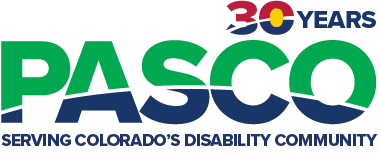Emergency Preparedness
In part one of our emergency preparedness series, we discussed creating the proper emergency kit for you and your loved ones’ specific needs. If you have your kit prepared, you may ask – now what?
While creating an emergency kit is a crucial part of being prepared, creating and maintaining emergency plans for your family can be a life-saving action. Ensuring that you and your loved ones all know what to do when disaster strikes can help keep families safe and protected, no matter the situation.
These plans may vary depending on you and your loved one’s specific needs. The tips and guides can be a great starting point and can be adapted into the most beneficial emergency plan for you and your family.

How will I receive emergency alerts and warnings?
- Those with disabilities should register with the office of emergency services or local fire department for assistance, so needed help can be provided quickly in an emergency.
- NOAA Weather Alert Radio with Text Messages ─ these radios are specially designed to receive emergency information. Some radios can be connected to strobe lights, text printers, bed shakers, etc. When the alarm goes off, there will be a short text message stating the current emergency. Some radios can be used with an induction loop and the t-coil on hearing aids or cochlear implant speech processors.
- Many cities and counties in Colorado offer a citizen alert service that allows you to choose your method of notifications that can include a text alert to your mobile phone. Please contact your local city or county to determine if this service is available in your area.
What is my shelter plan?
- If you have an individual who is dependent on electricity, contact your local energy company and inform them of this need. These companies keep a list that helps determine priority in maintaining and restoring power in an emergency.
- Make sure that your emergency kit is in a place where it can be easily accessed or is stored in your designated shelter room.
- Bring your family and pets inside.
- Close windows, lock doors, close windows, air vents, and fireplace dampers.
- Turn off fans, air conditioning and forced-air heating systems.
- Go into an interior room with few windows if possible.
- Be prepared to improvise and use what you have on hand to seal gaps so that you create a barrier between yourself and any contamination if applicable.


What is my evacuation route?
- Come up with a household plan to stay in touch in case you become separated; have a meeting place and update it depending on the circumstance.
- Try to utilize text messaging in these situations if able – this method requires far less bandwidth than making a call and can be a more reliable method.
- Assemble supplies that are ready for evacuation. Prepare a “go-bag” you can carry when you evacuate on foot or public transportation and supplies for traveling long distances if you have a car.
- Identify several places you could go in an emergency such as a friend’s home in another town, shelter or hotel. Choose destinations in different directions so that you have options during an emergency.
- If needed, identify a place to stay that will accept pets. Most public shelters allow only service animals.
- Those with disabilities should register with the office of emergency services or local fire department for assistance, so needed help can be provided quickly in an emergency.
What is my family/household communication plan?
FEMA’s guide to creating a family emergency plan is a fantastic resource with additional tips and tricks that help families be best prepared no matter what comes their way. The worksheets, tips and tricks provided are a crucial resource for families.
The first step in creating an emergency plan that works for your family is to sit down and talk with your family about different types of emergencies, what everyone can do to prepare for them, and to brainstorm together ideas of how to care for your loved ones with a disability during an emergency. If children and the whole family are involved in the planning, everyone is more likely to take an active role. Emergency planning can be fun, and doesn’t have to be scary!


What is my emergency services communication plan?
These communication plans may vary based on individual needs and circumstances. PASCO can help provide guidance in creating these plans that would best accommodate your loved one’s unique needs.
- Determine how you will communicate with emergency personnel if you do not have your communication devices (augmentative communication device, word board, artificial larynx)
- Store paper, writing materials, copies of a word or letter board and pre-printed key phrases specific to anticipated emergencies in all your emergency kits, your wallet, purse, etc.
Do I need to update my emergency kit?
Take the time every few months to double-check that your emergency kit is up to date and has everything you may need. Check expiration dates, functionality of any battery-powered tools, etc.
Still need to create an emergency kit? Check out our guide on things you may need to include.


File of Life
A file of life is a small tool that can save lives. These magnets allow first responders to contact PASCO to relay your medical information in case of emergency. File of Life magnets are distributed to PASCO families upon start of care and should be placed on your refrigerator where they can easily be seen. If you did not receive or misplaced your file of life magnet, please contact support@pascohh.com and we would be happy to provide one for you.
Ready.gov, as well as the Colorado Division of Homeland Security and Emergency Management, provide comprehensive guides on creating an emergency plan for your family. A special thanks to them for providing information and guidance on this article. For more information, please visit their sites.
PASCO is here to help! If you have any questions on creating an emergency plan or about how PASCO can assist in an emergency, please contact support@pascohh.com.


